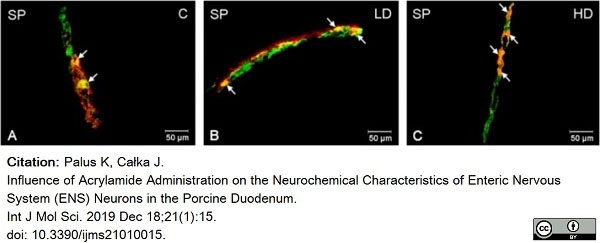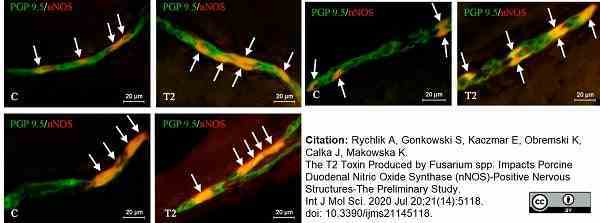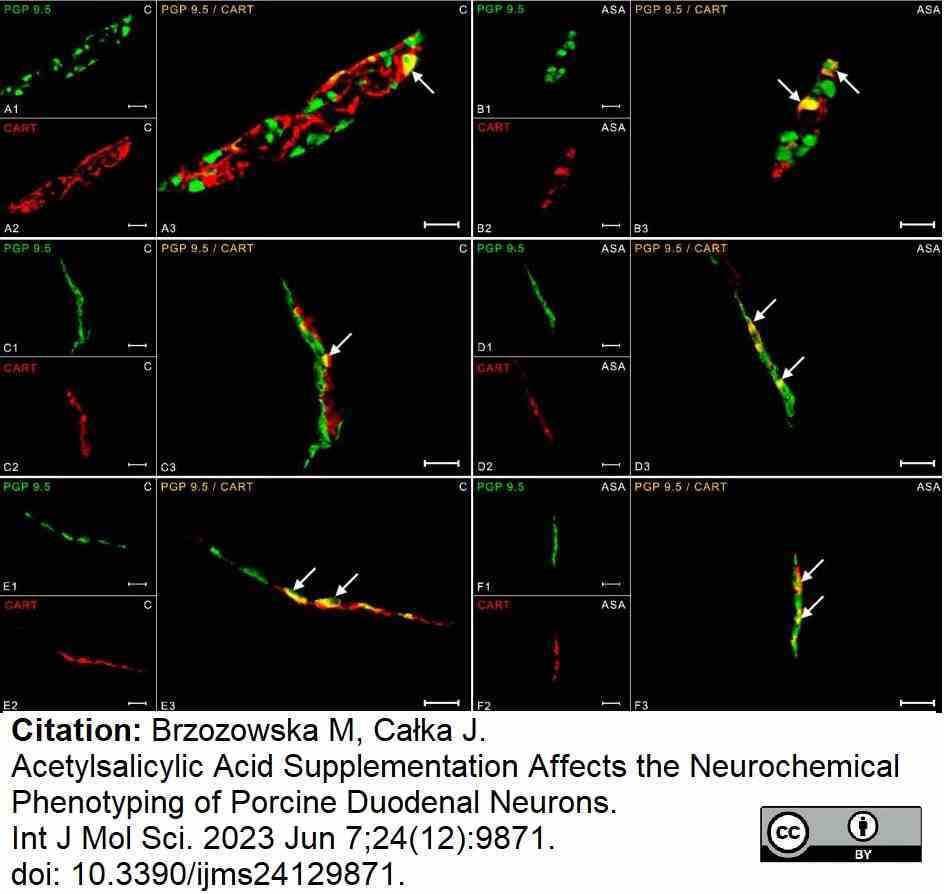Protein Gene Product 9.5 antibody | 13C4










































Mouse anti Human Protein Gene Product 9.5
- Product Type
- Monoclonal Antibody
- Clone
- 13C4
- Isotype
- IgG2a
- Specificity
- Protein Gene Product 9.5
| Mouse anti Human protein gene product 9.5 antibody, clone 13C4 recognizes protein gene product 9.5 (PGP9.5), a ubiquitin hydrolase widely expressed in neuronal tissues representing, by weight 1-2% of total soluble brain proteins. PGP9.5, also known as ubiquitin C-terminal hydrolase 1 (UCHL-1), is involved in the regulation of the ubuiquitin pathway. Mouse anti Human protein gene product 9.5 antibody, clone 13C4 stains neuronal cell bodies and axons in the CNS and periphery, small nerve fibres in peripheral tissues, neuroendocrine cells in the pituitary, thyroid, pancreas and tumours of the DNES. Mouse anti Human protein gene product 9.5 antibody, clone 13C4 stains neuroendocrine cells in human adult gut (unlike Mouse anti Human Protein Gene Product 9.5 antibody, clone 31A3). Clones 31A3 and 13C4 each recognize a different epitope towards the N-terminus of the protein. |
- Target Species
- Human
- Species Cross-Reactivity
-
Target Species Cross Reactivity Rat Guinea Pig Pig Beaver Donkey - N.B. Antibody reactivity and working conditions may vary between species.
- Product Form
- Purified IgG - liquid
- Preparation
- Purified IgG prepared by affinity chromatography on Protein A from tissue culture supernatant
- Buffer Solution
- Phosphate buffered saline
- Preservative Stabilisers
0.09% Sodium Azide (NaN3) - Carrier Free
- Yes
- Immunogen
- Native, from brain
- Approx. Protein Concentrations
- 1 mg/ml
- Regulatory
- For research purposes only
- Guarantee
- 12 months from date of despatch
Avoid repeated freezing and thawing as this may denature the antibody. Storage in frost-free freezers is not recommended.
| Application Name | Verified | Min Dilution | Max Dilution |
|---|---|---|---|
| ELISA | |||
| Immunofluorescence | |||
| Immunohistology - Paraffin 1 | 1/200 | ||
| Western Blotting | 1/100 | 1/1000 |
- 1 Antigen is stable in formalin fixed paraffin embedded sections, however we recommend fixation in 95% ethanol/5% acetic acid for 2-3 hours prior to paraffin embedding. Can be used without acid/ethanol fixation if the sections are subjected to microwave treatment in citrate buffer by standard methods.
References for Protein Gene Product 9.5 antibody
-
Wilson, P.O. et al. (1988) The immunolocalization of protein gene product 9.5 using rabbit polyclonal and mouse monoclonal antibodies.
Br J Exp Pathol. 69 (1): 91-104. -
Cooke, H.J. et al. (1999) Activation of neuronal adenosine A1 receptors suppresses secretory reflexes in the guinea pig colon.
Am J Physiol. 276 (2 Pt 1): G451-62. -
Sienkiewicz, W. et al. (2000) Has active immunization against gonadotrophin-releasing hormone any effect on testis innervation in the pig? An immunohistochemical study.
Anat Histol Embryol. 29 (4): 247-54. -
Sasaki, H. et al. (2001) Expression of the protein gene product 9.5, PGP9.5, is correlated with T-status in non-small cell lung cancer.
Jpn J Clin Oncol. 31: 532-5. -
Komori, N. et al. (2003) Presence of beta-arrestin-1 immunoreactivity in the cutaneous nerve fibers of rat glabrous skin.
Brain Res. 988 (1-2): 121-9. -
Kaleczyc, J. et al. (2007) The distribution and chemical coding of intramural neurons supplying the porcine stomach - the study on normal pigs and on animals suffering from swine dysentery.
Anat Histol Embryol. 36 (3): 186-93. -
Pidsudko, Z. et al. (2008) Distribution and chemical coding of intramural neurons in the porcine ileum during proliferative enteropathy.
J Comp Pathol. 138 (1): 23-31. -
Kotani, T. et al. (2010) Expression of PTPRO in the interneurons of adult mouse olfactory bulb.
J Comp Neurol. 518: 119-36.
View The Latest Product References
-
Godlewski J & Pidsudko Z (2012) Characteristic of galaninergic components of the enteric nervous system in the cancer invasion of human large intestine.
Ann Anat. 194 (4): 368-72. -
Dudek, A. et al. (2012) Immunohistochemical characterization of neurons in the vestibular ganglion (Scarpa's ganglion) of the pig.
Pol J Vet Sci.15: 499-507. -
Bulc, M. et al. (2013) Immunohistochemical characterization of the porcine nodose ganglion.
Acta Histochem. 115 (5): 440-6. -
Burliński, P.J. (2012) Inflammation- and axotomy-induced changes in cocaine- and amphetamine-regulated transcript peptide-like immunoreactive (CART-LI) nervous structures in the porcine descending colon.
Pol J Vet Sci. 15 (3): 517-24. -
Buels, K.S. et al. (2012) Non-bronchodilating mechanisms of tiotropium prevent airway hyperreactivity in a guinea-pig model of allergic asthma.
Br J Pharmacol. 165: 1501-14. -
Akazawa, N. et al. (2014) Neuroendocrine carcinoma of the esophagus: clinicopathologic study of 10 cases and verification of the diagnostic utility of mASH1, NeuroD1, and PGP9.5
Esophagus. 11 (4): 245-57. -
Zalecki, M. (2015) The Influence of Antral Ulcers on Intramural Gastric Nerve Projections Supplying the Pyloric Sphincter in the Pig (Sus scrofa domestica)-Neuronal Tracing Studies.
PLoS One. 10 (5): e0126958. -
Szymanska, K. et al. (2018) The Influence of High and Low Doses of Bisphenol A (BPA) on the Enteric Nervous System of the Porcine Ileum.
Int J Mol Sci. 2018;19 (3): 917. -
Zalecki, M. et al. (2019) Enteric nervous system in the European beaver (Castor fiber) pylorus - an immunohistochemical study.
Pol J Vet Sci. 22 (1): 101-7. -
Li, T.T. et al. (2020) Effects of different culture systems on the culture of prepuberal buffalo (Bubalus bubalis) spermatogonial stem cell-like cells in vitro.
J Vet Sci. 21 (1): e13. -
Choi, Y. et al. (2020) Stage-Dependent Expression of Protein Gene Product 9.5 in Donkey Testes.
Animals (Basel). 10 (11): 2169. -
Zalecki, M. et al. (2020) Inferior vagal ganglion galaninergic response to gastric ulcers.
PLoS One. 15 (11): e0242746. -
Zalecki, M. et al. (2021) Cocaine and Amphetamine Regulated Transcript (CART) Expression Changes in the Stomach Wall Affected by Experimentally Induced Gastric Ulcerations.
Int J Mol Sci. 22 (14):7437. -
Makowska, K. et al. (2022) The Comparison of the Influence of Bisphenol A (BPA) and Its Analogue Bisphenol S (BPS) on the Enteric Nervous System of the Distal Colon in Mice
Nutrients. 15 (1): 200. -
Makowska, K. et al. (2023) Bisphenol A Effects on Neurons' Neurochemical Character in the Urinary Bladder Intramural Ganglia of Domestic Pigs.
Int J Mol Sci.24 (23): 16792. -
Rytel, L. et al. (2021) Chemically-Induced Inflammation Changes the Number of Nitrergic Nervous Structures in the Muscular Layer of the Porcine Descending Colon.
Animals (Basel). 11 (2): 394. -
Shakeel, M. et al. (2022) Seasonal changes in the expression of molecular markers of stallion germ cells.
J Equine Vet Sci. 118: 104109. -
Franke-Radowiecka, A. et al. (2020) Nerve structures of the heart and their immunohistochemical characterization in 10-week-old porcine foetuses.
C R Biol. 343 (1): 53-62. -
Bulc, M. et al. (2022) Administration of Different Doses of Acrylamide Changed the Chemical Coding of Enteric Neurons in the Jejunum in Gilts.
Int J Environ Res Public Health. 19 (21):14514. -
Makowska, K. et al. (2023) Effects of the long-term influence of bisphenol A and bisphenol S on the population of nitrergic neurons in the enteric nervous system of the mouse stomach.
Sci Rep. 13 (1): 331. -
Kawabata, Y. et al. (2024) Hair Follicle Damage after 100 mGy Low-Dose Fractionated X-Ray Irradiation and the Protective Effects of TEMPOL, a Stable Nitroxide Radical, against Radiation.
Radiat Res. 201 (2): 115-25. -
Makowska, K. et al. (2021) Bisphenol A affects vipergic nervous structures in the porcine urinary bladder trigone.
Sci Rep. 11 (1): 12147. -
Rychlik, A. et al. (2020) The T2 Toxin Produced by Fusarium spp. Impacts Porcine Duodenal Nitric Oxide Synthase (nNOS)-Positive Nervous Structures-The Preliminary Study.
Int J Mol Sci. 21 (14): 5118. -
Makowska, K. et al. (2023) Influence of bisphenol A and its analog bisphenol S on cocaine- and amphetamine-regulated transcript peptide-positive enteric neurons in the mouse gastrointestinal tract.
Front Mol Neurosci. 16: 1234841. -
Brzozowska, M. & Całka, J. (2023) Acetylsalicylic Acid Supplementation Affects the Neurochemical Phenotyping of Porcine Duodenal Neurons.
Int J Mol Sci. 24 (12) :9871. -
Baert, Y. et al. (2020) A multi-organ-chip co-culture of liver and testis equivalents: a first step toward a systemic male reprotoxicity model.
Hum Reprod. 35 (5): 1029-44.
- Synonyms
- PGP 9.5
- UCHL1
- RRID
- AB_620255
- UniProt
- P09936
- Entrez Gene
- UCHL1
- GO Terms
- GO:0005886 plasma membrane
- GO:0004197 cysteine-type endopeptidase activity
- GO:0004221 ubiquitin thiolesterase activity
- GO:0005634 nucleus
- GO:0005737 cytoplasm
- GO:0006511 ubiquitin-dependent protein catabolic process
- GO:0008242 omega peptidase activity
- GO:0016579 protein deubiquitination
- GO:0016874 ligase activity
- View More GO Terms
- GO:0031694 alpha-2A adrenergic receptor binding
- GO:0043130 ubiquitin binding
- GO:0043407 negative regulation of MAP kinase activity
7863-2004
If you cannot find the batch/lot you are looking for please contact our technical support team for assistance.
Please Note: All Products are "FOR RESEARCH PURPOSES ONLY"
View all Anti-Human ProductsAlways be the first to know.
When we launch new products and resources to help you achieve more in the lab.
Yes, sign me up








































